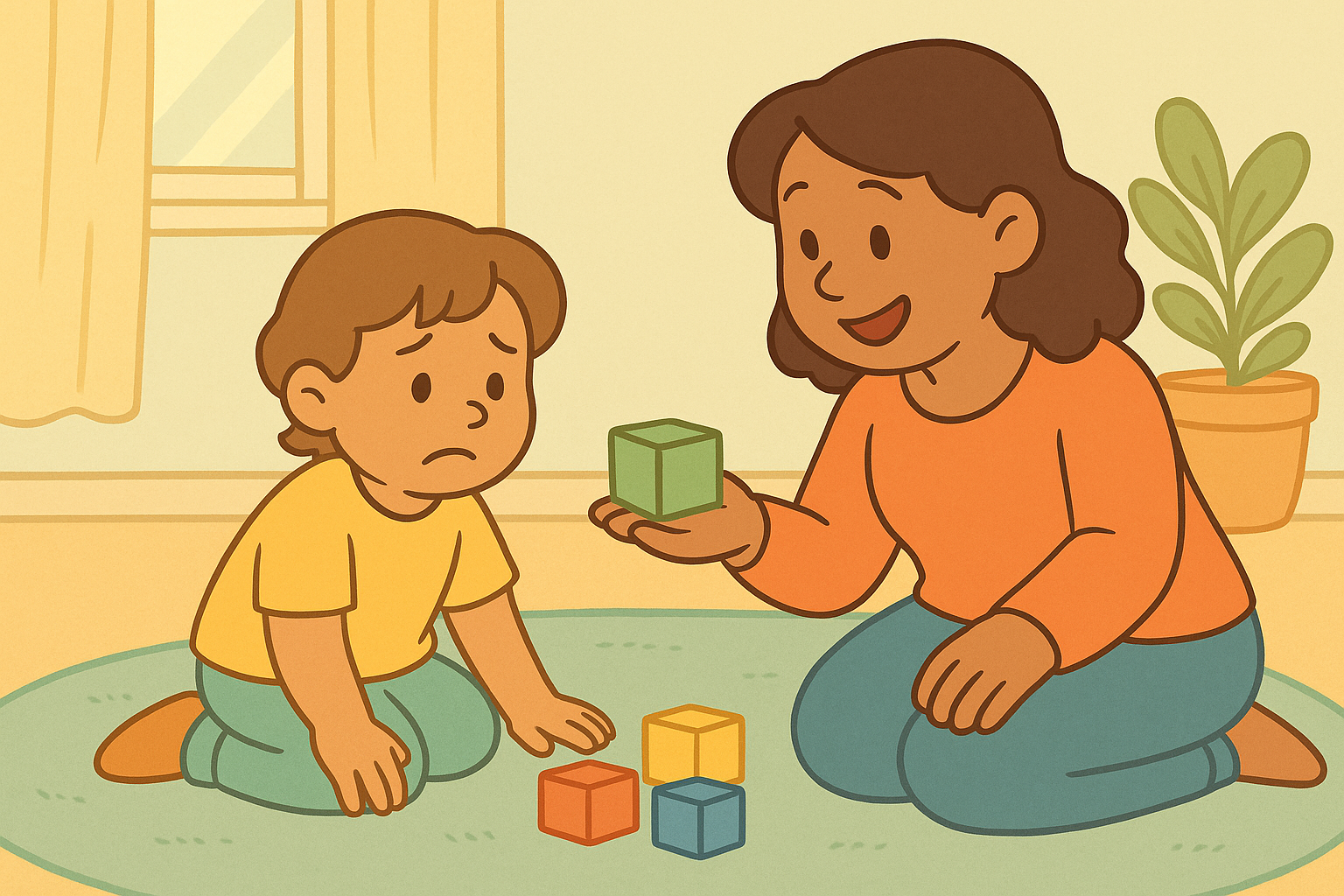How to Support Kids Who Resist Structured Learning
How to Support Kids Who Resist Structured Learning
When “Let’s Sit Down and Learn” Doesn’t Work
If you’ve ever tried to do a workbook or guided lesson with your preschooler and ended up with a squirmy, frustrated, or defiant child, you’re not alone.
Some kids light up at structured activities — others resist them completely. But that doesn’t mean they’re “not ready” or “not interested in learning.”
It usually means they need a different entry point — one that honors their personality, attention style, and developmental stage.
Why Some Kids Resist Structure
Resistance to structured learning isn’t about laziness or stubbornness — it’s often about control, readiness, or environment.
Here are the most common causes:
1. The task feels too hard (or too easy).
When a child isn’t challenged enough, they get bored. When it’s too hard, they get anxious. Either way, frustration looks like resistance.
(Also see: How to Scaffold Early Learning for Different Ages)
2. The structure feels limiting.
Some children crave movement, choice, or hands-on play. Sitting still at a table may feel restrictive — especially for younger learners or sensory-seeking kids.
3. The timing is off.
If a child is hungry, tired, or overstimulated, they simply can’t focus — even on a favorite activity.
4. The emotional environment feels tense.
Children pick up on adult stress quickly. If learning time feels pressured or rushed, their brain moves into defense mode instead of discovery mode.
(Also see: Building a Calm-Down Corner That Actually Works)
Step 1: Reframe “Structure”
Structure doesn’t have to mean sitting still, following strict rules, or completing worksheets.
Think of structure as predictability with flexibility — a safe rhythm that gives children comfort and clarity, but still allows freedom and choice.
“We always start with a song, then do one fun activity before snack time.”
Predictable routines anchor kids; flexible approaches keep them engaged.
(Also see: Why Repetition and Routine Boost Learning Retention)
Step 2: Start With Play — Then Add Purpose
Children learn best when they don’t even realize they’re “learning.”
Try these play-first approaches:
Counting blocks as you build a tower.
Drawing letters in sand instead of on paper.
Singing instruction songs (“Head, Shoulders, Knees, and Toes”).
Sorting snacks or toys by color or size.
Once a child is relaxed and engaged, you can gently introduce more structure — like guided steps or specific goals.
Step 3: Offer Choices Within Boundaries
Give your child a sense of control by offering simple choices:
“Would you like to start with painting or puzzles?”
“Do you want to sit at the table or on the rug?”
Both choices meet your learning goal, but your child feels empowered to decide.
(Also see: Encouraging Questioning and Exploration in Preschoolers)
Step 4: Keep Learning Time Short and Predictable
Children’s attention spans are short — about 2–5 minutes per year of age.
Aim for mini learning bursts:
5–10 minutes for toddlers
10–15 minutes for preschoolers
15–20 minutes for early school age
A short, positive session is far more valuable than a long, frustrating one.
End before attention fades so learning feels successful.
Step 5: Use Movement and Music
Kids who resist structure often thrive when learning becomes physical.
Try:
Clapping syllables in names
Marching while counting steps
Dancing to shape or letter songs
Acting out stories with puppets or gestures
Movement helps regulate energy and emotion — and rhythm anchors memory.
(Also see: The Link Between Music and Early Math Skills)
Step 6: Follow Their Interests
Does your child love trucks, dinosaurs, or cooking? Use that passion to guide structured learning.
For example:
Count toy cars instead of blocks.
Write dinosaur names together.
Sort baking ingredients by size or color.
Children are more cooperative when learning feels personal and meaningful.
Step 7: Use Gentle Transitions
Kids who resist structure often need extra time to shift gears.
Try adding a “transition song” or “countdown ritual”:
“When the song ends, we’ll clean up and start storytime.”
Predictable cues lower anxiety and make routines smoother.
Step 8: Focus on Connection, Not Compliance
If your child resists an activity, pause and reconnect instead of pushing through.
A hug, laugh, or shared snack resets the nervous system better than insistence.
When children feel seen and loved, they’re more willing to take on challenges.
(Also see: Teaching Emotional Recognition Through Storytime)
Step 9: Celebrate Small Wins
Recognize effort more than outcome.
“You tried something new today — that’s amazing!”
When children associate structured learning with pride and praise, their resistance softens over time.
Step 10: Gradually Expand the Challenge
Once your child is comfortable, slowly lengthen the structured moments — but only by a few minutes at a time.
Scaffold success:
Start with play-based learning
Add structure through songs, visuals, or steps
End with a sense of accomplishment
Consistency + patience = progress.
What Not to Do
Don’t force learning: It creates power struggles and avoidance.
Don’t compare your child to others: Each has their own rhythm.
Don’t skip structure entirely: Gentle routines help kids feel secure.
Don’t take resistance personally: It’s communication, not rebellion.
(Also see: Building Cognitive Flexibility Through Pretend Play)
When to Seek Extra Support
If your child consistently avoids structured play or group activities, talk with your pediatrician or early childhood educator.
Sometimes, sensory sensitivities, attention differences, or anxiety can make transitions harder — and early support can make a world of difference.
This content is for educational purposes and is not a substitute for professional medical or psychological advice.
Popular Parenting Articles




